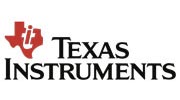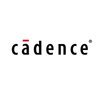Filter interviews by
Qualcomm Interview Questions and Answers
287 Interview questions
I have extensive experience troubleshooting boot issues across various operating systems and hardware configurations.
Identified and resolved BIOS misconfigurations preventing booting on a custom-built PC.
Used recovery tools to fix corrupted boot sectors on Windows systems.
Diagnosed hardware failures, such as faulty RAM, that caused boot loops.
Utilized safe mode to troubleshoot driver issues that hindered system st...
Wi-Fi generations, from 802.11b to Wi-Fi 6E, have evolved in speed, range, and efficiency, enhancing wireless connectivity.
802.11b (1999): Up to 11 Mbps, 2.4 GHz, good range but limited speed.
802.11g (2003): Up to 54 Mbps, 2.4 GHz, backward compatible with 802.11b.
802.11n (2009): Up to 600 Mbps, operates on 2.4 GHz and 5 GHz, MIMO technology for better performance.
802.11ac (2013): Up to 3.5 Gbps, primarily 5 GHz, ...
Yes, I am hands-on in Python, utilizing it for automation, data analysis, and developing applications.
Developed automation scripts using Python to streamline data processing tasks, reducing manual effort by 30%.
Utilized Python libraries like Pandas and NumPy for data analysis, enabling better decision-making through insights.
Created RESTful APIs with Flask to support application integration, enhancing system inter...
VLSI stands for Very Large Scale Integration, a technology used to create integrated circuits by combining thousands of transistors.
VLSI technology allows for the integration of millions of transistors on a single chip.
Common applications include microprocessors, memory chips, and digital signal processors.
Examples of VLSI devices are CPUs like Intel's Core series and GPUs like NVIDIA's GeForce series.
VLSI design ...
What people are saying about Qualcomm





The area of an equilateral triangle inscribed in a circle can be calculated using the circle's radius.
The formula for the area of an equilateral triangle is (sqrt(3)/4) * a^2, where 'a' is the side length.
For a triangle inscribed in a circle, the side length 'a' can be expressed as a = r * sqrt(3).
Substituting 'a' into the area formula gives Area = (sqrt(3)/4) * (r * sqrt(3))^2 = (3 * r^2) / 4.
Example: If r = 2, t...
Sort an array of integers, removing duplicates to return distinct elements in increasing order.
Use a set to eliminate duplicates: e.g., [3, 1, 2, 2] becomes {1, 2, 3}.
Convert the set back to a list and sort it: e.g., sorted([1, 2, 3]) results in [1, 2, 3].
Return the sorted list as the final output.
Swap the first two digits of a hexadecimal string with the next two digits.
Identify the first four characters of the string.
Swap the first two characters with the next two characters.
Example: '1A2B3C' becomes '2B1A3C'.
If the string has less than four characters, no swap occurs.
Merge multiple sorted arrays into a single sorted array efficiently.
Use a min-heap to keep track of the smallest elements from each array.
Extract the smallest element from the heap and add it to the result array.
Insert the next element from the array of the extracted element into the heap.
Repeat until all elements from all arrays are merged.
Example: Merging [1, 4, 5], [1, 3, 4], [2, 6] results in [1, 1, 2, 3, 4, 4...
I bring a unique blend of skills, experience, and passion that aligns perfectly with your organization's goals and values.
Proven track record: In my previous role, I increased team productivity by 20% through effective project management.
Strong communication skills: I successfully led cross-functional teams, ensuring clarity and collaboration across departments.
Adaptability: I thrive in fast-paced environments, qu...
I am a dedicated professional with a passion for continuous learning and a strong commitment to teamwork and innovation.
Strong communication skills: I effectively convey ideas and collaborate with diverse teams, as demonstrated in my previous role leading cross-functional projects.
Adaptable and resilient: I thrive in fast-paced environments, having successfully navigated organizational changes while maintaining pr...
Qualcomm Interview Experiences
272 interviews found
Interview Questionnaire
16 Questions
- Q1. Explain the difference between Moore and Mealy state models
- Q2. Draw the state diagram and the clocked D-flipflop circuit for a 0110 sequence detector
- Q3. What is parity and how is it used? Draw the circuit diagram for a parity checker
- Q4. Design a memory organization given the size and block units
- Ans.
Designing a memory organization based on size and block units.
Determine the size of the memory and the size of each block unit
Choose a suitable memory organization scheme such as direct mapping, associative mapping, or set-associative mapping
Implement the chosen scheme and test for efficiency and accuracy
- Q5. Draw the circuit diagram for a random number generator
- Ans.
A random number generator circuit diagram can be created using a noise source and an amplifier.
Use a noise source such as a Zener diode or a reverse-biased transistor
Amplify the noise signal using an amplifier circuit
Use a comparator to convert the analog signal to a digital signal
Add a clock circuit to control the output frequency
- Q6. What is a Schmitt trigger/inverter?
- Ans.
A Schmitt trigger/inverter is a circuit that converts a noisy input signal into a clean digital output signal.
It has two threshold voltage levels: a high threshold and a low threshold
The output of the circuit changes state only when the input voltage crosses one of the threshold levels
It is commonly used in digital circuits to clean up noisy signals and to provide hysteresis
Examples include debouncing switches, signal ...
- Q7. Arrange the inputs to AND gates so that power usage is optimized/delay is optimized
- Ans.
To optimize power usage/delay in AND gates, arrange inputs based on their capacitance and resistance.
Arrange inputs with lower capacitance and resistance closer to the gate
Inputs with higher capacitance and resistance should be placed farther away
Consider the layout of the circuit and the routing of the wires
Simulation tools can be used to determine optimal input arrangement
- Q8. Draw the CMOS circuit for a given logic equation and do the corresponding W/L sizing
- Ans.
Answering a question on drawing CMOS circuit and W/L sizing for a given logic equation.
Understand the logic equation and its truth table
Use CMOS inverter and NAND gates to implement the logic
Size the transistors based on their role in the circuit
Check the circuit for correct functionality
Examples: AND gate, OR gate, XOR gate
- Q9. Draw a circuit for a set of logic equations using PLA
- Ans.
A circuit for a set of logic equations using PLA
PLA stands for Programmable Logic Array
PLA is a type of digital circuit used to implement combinational logic circuits
The circuit consists of an AND array and an OR array
Inputs are fed into the AND array and the outputs are fed into the OR array
Example: A PLA circuit for a 2-input XOR gate would have 2 inputs, 2 AND gates, and 1 OR gate
- Q10. Draw and talk about a basic SRAM cell
- Q11. Given the delays for gates and wires, draw output waveforms for the given logic circuit
- Ans.
Draw output waveforms for a logic circuit given delays for gates and wires.
Identify the logic gates and their delays
Determine the propagation delay for each wire
Use the delays to calculate the output waveform
Draw the waveform using a timing diagram
- Q12. What is Min-Cut placement algorithm? Given some block sizes, use the algorithm to place them on a given chip area
- Q13. Given a clock waveform of frequency f, design a circuit to get an output of frequency f/3
- Ans.
Design a circuit to get an output of frequency f/3 from a clock waveform of frequency f.
Use a counter to divide the frequency by 3
Implement a flip-flop to toggle the output
Use logic gates to control the counter and flip-flop
- Q14. Explain a little about your M.Tech. project
- Ans.
My M.Tech. project was focused on developing a machine learning algorithm for predicting stock prices.
Used historical stock data to train the algorithm
Implemented various machine learning techniques such as regression and neural networks
Achieved an accuracy of 80% in predicting stock prices
Explored the impact of news articles on stock prices
- Q15. What do you know about Qualcomm?
- Ans.
Qualcomm is a multinational semiconductor and telecommunications equipment company.
Founded in 1985 in San Diego, California
Specializes in designing and manufacturing wireless telecommunications products and services
Known for their Snapdragon processors used in smartphones and other mobile devices
Also involved in developing 5G technology and Internet of Things (IoT) devices
Has partnerships with various companies includi...
- Q16. Have you ever worked in groups? What kind of work was it?
- Ans.
Yes, I have worked in groups on various projects.
I have worked in groups during my college projects.
I have also worked in groups in my previous job on a software development project.
In both cases, we had to collaborate and divide tasks among team members.
We had regular meetings to discuss progress and address any issues.
I found that working in a group allowed us to leverage each other's strengths and produce better res...
Interview Preparation Tips
Experience: The Quant and Programming sections were long but fairly easy; I pretty much sailed through them. However, the core EC section was really lengthy and not so easy, and also had negative marking. I was able to complete the first 2 sections completely, and around 11/20 questions in the core section.
The Quant section touched basic topics like probability, algebra and simple geometry. Programming questions were quite syntax-based, rather than algorithm-based. In the core section, the focus was on device physics and digital electronics, including combinational/sequential circuits and microprocessors.
Tips: 1. Practice Quantitative sections. A LOT. Speed is of the essence in these sections, because almost everyone is on the same level as you are where mathematics is concerned.
2. Know the basic syntax of C++, that is the most common language you're tested on in the Programming section. Also know simple data structures and complexity calculations.
3. The core section is the most important one, so make sure your knowledge is sound and practice solving digital circuits as fast as you can.
4. The EC section is generally quite lengthy, so quickly flip through the questions once and then figure out what questions you can do for sure, finish those and then start on the remaining ones. DO NOT STAY ON ONE QUESTION FOR TOO LONG, because you won't even be able to haphazardly guess on the other questions because of the negative marking.
Duration: 60 minutes
Total Questions: 50
Round: Technical Interview
Experience: I had only one round of technical interview. The interviewer was a person who'd worked at Qualcomm for around 5 years, as a Senior Engineer. The questions were not too tough, but challenging enough that you had to be quick at circuit evaluations. I wasn't able to solve all the questions completely, but talking aloud really helped, the interviewer himself would pass on hints or correct me sometimes if I went too far off on a tangent.
All in all, the interview lasted for about 45 minutes and was tiring but really fun if you like EC. For the first time, I realized that I actually knew electronics after studying it for 4 years! ;)
Tips: 1. Many people must have said this to you, but I'll say it again: Don't be too nervous. The questions are asked in such a way that you will definitely not be able to do all of them, so don't freak if you miss something here and there, they know it too!
2. Make sure you have the basics of logic gates, sequential design and digital VLSI circuits down pat when you're preparing for the interview. These are the main areas they are looking for in the VLSI Electronics interviews. Apart from these, a knowledge of Computer Architecture and basic VLSI CAD wouldnn't hurt!
3. I can't emphasize this enough: Talk out when thinking. It is very important for the interviewers to know what kind of technical logic you use when working out problems, and most often they start talking with you, which leads to an insightful discussion rather than a Q&A session.
4. Make sure your interest in the field also comes across; as far as I saw, they're looking for people who actually like EC and will be able to work hours together without getting bored of it (Well, not too much :P)
Round: HR Interview
Experience: The HR interview wasn't really an interview; it was more of a 15-minute discussion with an HR person. He was basically looking to see whather I would be able to fit into a team-oriented work environment and add something to it, that's all. Apart from that, there was mostly a discussion on the package breakdown, and the kind of work and teams we could be involved with in Qualcomm.
Tips: 1. Know something about Qualcomm, so that you're able to answer the first question they'll mostly ask.
2. This round is set to get to know you, so clear all your doubts and ask as many questions as you want.
3. Once again, try to express your interest in working in the field of electronics; if your passion shows, this round is pretty much cleared!
General Tips: 1. Be sure you're interested in EC before applying to Qualcomm for the VLSI profile.
2. For the test, speed is of the essence; practice solving different question sets in as less time as possible.
3. For the interview(s), don't be nervous, talk aloud, and have a sound technical base to build upon.
Skills: Digital Circuits, VLSI Technology, Low-Power Electronics, EC Device Physics, VLSI Circuit Design, Basic Programming
College Name: Indian Institute of Technology Kharagpur
Motivation: I've always been interested in Electronics, ever since I studied the 8085 Microprocessor in the 12th Grade. Even when I joined IITKGP, I changed my Department to Electronics after my first year, because that's what I wanted to study!
Circuit design is one of the most interesting and challenging fields in today's electronics field, and I would love to see what happens, and be a part of it. Especially since right now we're on the verge of a big change - we're close to moving away from silicon-based designs; what happens next?
Skills evaluated in this interview
I appeared for an interview in Dec 2024.
(2 Questions)
- Q1. What can you share about your experience?
- Ans.
I have over 5 years of experience as a Business Analyst in the finance industry.
Led cross-functional teams to analyze market trends and develop strategic plans
Performed data analysis to identify opportunities for cost reduction and revenue growth
Collaborated with stakeholders to gather requirements and create detailed business requirements documents
- Q2. What are the specific responsibilities associated with the role, and how does the workflow typically function?
- Ans.
Business Analyst responsibilities include analyzing data, identifying trends, and making recommendations to improve business processes.
Gather and analyze data to identify trends and make recommendations
Work closely with stakeholders to understand business needs and requirements
Create reports and presentations to communicate findings and recommendations
Collaborate with cross-functional teams to implement solutions
Monito...
(1 Question)
- Q1. It was little technical with the Excel and Power Bi
I appeared for an interview in Dec 2024.
(3 Questions)
- Q1. Mostly related to docker networking concept.
- Q2. How linux boot process work?
- Ans.
Linux boot process involves several stages including BIOS, bootloader, kernel initialization, and user space initialization.
BIOS (Basic Input/Output System) performs hardware initialization and loads bootloader
Bootloader (GRUB, LILO) loads the Linux kernel into memory and starts it
Kernel initializes devices, mounts the root filesystem, and starts the init process
Init process (systemd, SysVinit) starts user space proces...
- Q3. Git, merge abd rebase cherry-pick etc
Interview Preparation Tips
i was interviewed for devops roles
(2 Questions)
- Q1. What is Planning?
- Ans.
Planning is the process of setting goals, determining actions to achieve those goals, and allocating resources effectively.
Setting specific, measurable, achievable, relevant, and time-bound (SMART) goals
Creating a detailed plan of action to achieve the goals
Allocating resources such as time, money, and manpower efficiently
Monitoring progress and making adjustments as needed
Examples: Financial planning for a company's b...
- Q2. What to build financial model?
- Ans.
A financial model is built to forecast future financial performance of a company or project.
Identify the purpose of the financial model (e.g. budgeting, valuation, forecasting)
Gather historical financial data and relevant assumptions
Create income statement, balance sheet, and cash flow statement projections
Perform sensitivity analysis to assess the impact of different variables
Validate the model by comparing actual res...
(2 Questions)
- Q1. What is depreciation?
- Ans.
Depreciation is the allocation of the cost of a tangible asset over its useful life.
Depreciation is a non-cash expense that reduces the value of an asset over time.
It reflects the wear and tear, obsolescence, or decrease in value of an asset.
Common methods of calculating depreciation include straight-line, double declining balance, and units of production.
Example: A company purchases a machine for $10,000 with a useful...
- Q2. What is the concept of budgeting?
- Ans.
Budgeting is the process of creating a plan to manage income and expenses over a specific period of time.
Budgeting involves setting financial goals and creating a detailed plan to achieve them.
It helps in tracking income, expenses, and savings to ensure financial stability.
Budgeting can be done on a personal level, for businesses, or for specific projects.
Examples of budgeting tools include spreadsheets, budgeting apps...
I appeared for an interview in Sep 2024.
(1 Question)
- Q1. Project experience, admin questions, scenario based questions in admin, apex and in general tech questions Tableau, excel etc
(1 Question)
- Q1. Overall project experience and cross questioning on my candidature
(1 Question)
- Q1. Integration with Salesforce questions
(1 Question)
- Q1. Reports and dashboards, sprint management questions
(1 Question)
- Q1. Apex and Salesforce admin questions
Interview Preparation Tips
(2 Questions)
- Q1. Technical interview questions
- Q2. Questions technical interview questions
(2 Questions)
- Q1. One on round questions
- Q2. Questiobs one on round
Interview Preparation Tips
I applied via Approached by Company and was interviewed in Oct 2024. There were 3 interview rounds.
Aptitude and technical questions were asked
(2 Questions)
- Q1. Pattern question
- Q2. Doubly linked list insertion
(2 Questions)
- Q1. C++ linked lists
- Q2. Resume based, projects were asked.
(2 Questions)
- Q1. Bitwise questions easy to medium
- Q2. Merge two sorter linked list
- Ans.
Merge two sorted linked lists into a single sorted linked list
Create a new linked list to store the merged result
Iterate through both input linked lists and compare nodes to determine the order in which they should be merged
Update the next pointers of the nodes in the new linked list accordingly
(2 Questions)
- Q1. Inter process communication theory
- Q2. Reverse words in String
- Ans.
Reverse words in a given string
Split the string into words using a space as delimiter
Reverse each word individually
Join the reversed words back together with a space in between
(4 Questions)
- Q1. Linux Module development
- Q2. Dynamic 2d array multiplication
- Ans.
Dynamic 2D array multiplication involves multiplying two matrices of varying sizes using dynamic memory allocation.
Define two 2D arrays (matrices) dynamically using pointers.
Ensure the number of columns in the first matrix equals the number of rows in the second.
Allocate memory for the result matrix based on the dimensions of the input matrices.
Use nested loops to perform the multiplication: for each element in the res...
- Q3. Why this role ?
- Ans.
I am passionate about solving complex engineering problems and contributing to innovative projects.
I have always been fascinated by the intersection of technology and creativity
I thrive in fast-paced environments where I can apply my technical skills
I am excited about the opportunity to work with a talented team and make a real impact
- Q4. Why linux kernel ? And About how to compile linux kernel?
- Ans.
Linux kernel is popular for its open-source nature, stability, security, and flexibility. Compiling it allows customization and optimization.
Linux kernel is widely used due to its open-source nature, allowing for customization and collaboration.
It is known for its stability, security, and flexibility, making it a preferred choice for many developers and organizations.
Compiling the Linux kernel involves configuring the ...
Interview Preparation Tips
Prep Embedded Linux.
Prep Bitwise and Linked list Problems. (easy to medium)
Prep Array and String w.r.t to dynamic memory allocation.
Prep Pointer Arithmetic.
Skills evaluated in this interview
I applied via Company Website
(1 Question)
- Q1. Give an example of a customer dispute in making payment
- Ans.
A customer disputed a payment due to incorrect billing for services rendered, leading to a resolution process.
Customer received an invoice for $1,000 but only expected to pay $800 based on prior agreement.
Dispute arose when the customer claimed they were charged for services not rendered.
Communication breakdown occurred; the customer felt their concerns were not addressed promptly.
Resolution involved reviewing service ...
(2 Questions)
- Q1. Invert bits of a number
- Ans.
Invert the bits of a given number
Use bitwise XOR operator (^) with 1 to flip each bit
Repeat the process for all bits in the number
Return the inverted number
- Q2. How do you support backward compatibility whiel designing a system
- Ans.
Backward compatibility can be supported by using versioning, deprecation strategies, and maintaining clear communication with users.
Use versioning to clearly distinguish between different versions of the system
Implement deprecation strategies to phase out old features gradually
Maintain clear communication with users about upcoming changes and provide migration paths
Consider using compatibility layers or adapters to bri...
Skills evaluated in this interview
I applied via Campus Placement and was interviewed in Jul 2024. There were 3 interview rounds.
It consisted of aptitude questions, then OS C 1mrks, which were re GATE questions. No coding, I chose hardware role, so questions were from digital electronics too. prepare the gate questions for these subjects
(2 Questions)
- Q1. Question were from vlsi and SOC design
- Q2. Then questions on optimizations in vlsi were asked.
(2 Questions)
- Q1. Family and background check
- Q2. Resume and projects
Interview Preparation Tips
Qualcomm Interview FAQs
Some of the top questions asked at the Qualcomm interview -
The duration of Qualcomm interview process can vary, but typically it takes about less than 2 weeks to complete.
Tell us how to improve this page.
Qualcomm Interviews By Designations
- Qualcomm Software Engineer Interview Questions
- Qualcomm Associate Engineer Interview Questions
- Qualcomm Engineer Interview Questions
- Qualcomm Senior Engineer Interview Questions
- Qualcomm Software Developer Interview Questions
- Qualcomm Hardware Engineer Interview Questions
- Qualcomm Senior Software Engineer Interview Questions
- Qualcomm Intern Interview Questions
- Show more
Interview Questions for Popular Designations
- Software Engineer Interview Questions
- Associate Engineer Interview Questions
- Engineer Interview Questions
- Senior Engineer Interview Questions
- Software Developer Interview Questions
- Hardware Engineer Interview Questions
- Senior Software Engineer Interview Questions
- Intern Interview Questions
- Show more
Overall Interview Experience Rating
based on 192 interview experiences
Difficulty level
Duration
Interview Questions from Similar Companies
Qualcomm Reviews and Ratings
based on 1.1k reviews
Rating in categories
|
Senior Engineer
1.5k
salaries
| ₹22 L/yr - ₹40 L/yr |
|
Software Engineer
1.1k
salaries
| ₹16.8 L/yr - ₹30 L/yr |
|
Engineer
918
salaries
| ₹16.6 L/yr - ₹30 L/yr |
|
Senior Software Engineer
748
salaries
| ₹23.9 L/yr - ₹40 L/yr |
|
Senior Leader Engineer
512
salaries
| ₹34.1 L/yr - ₹58.9 L/yr |

Nvidia

Intel

Mercedes-Benz Research and Development India

Tata Electronics
- Home >
- Interviews >
- Qualcomm Interview Questions















